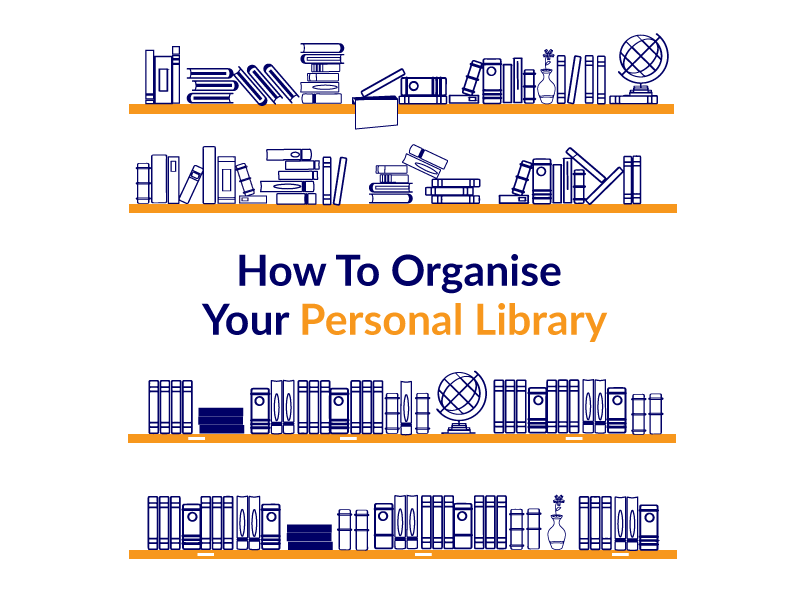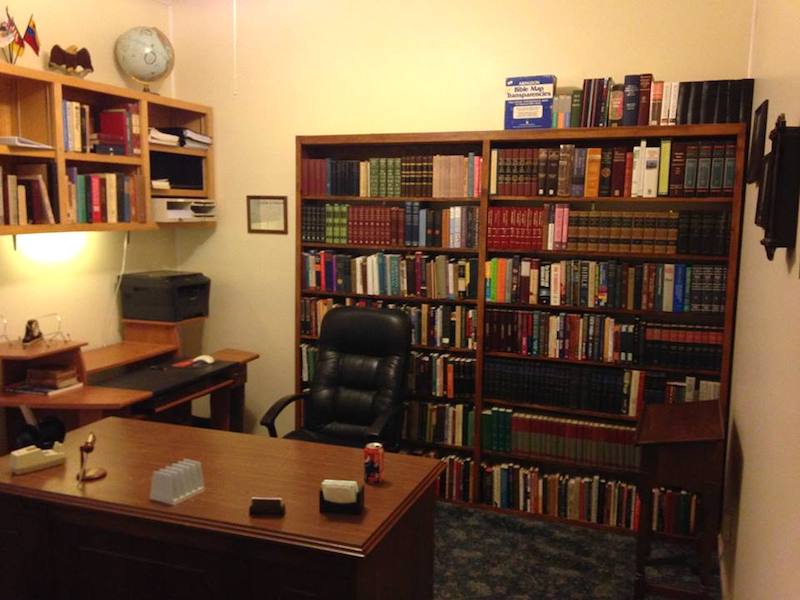Essay
A Step-By-Step Guide To Organising Your Personal Library

The Curious Reader
March 13, 2018
Organising your personal library may sound like an onerous task but it is also extremely rewarding. After all, you need to be able to find your books easily and, if your collections are anything like ours, this is extremely difficult unless you have organised and catalogued your library so you know exactly where to look for them.
This step-by-step guide will help you not only organise your personal library but also give you tips on saving space, efficiently cataloguing your collection and also some suggestions on how to make your book rack look more appealing and personal.
Enter Overwhelm
First things first, do not get overwhelmed! Whether you have 50 books, 500 books or 5000 books, you can always sort out and set up your library. It’s all about allocating some time for this task. If you own 1000+ books, you may not be able to do this over half a day, so set aside a few hours every weekend for working on your library. Trust us, it’s absolutely worth it and will take less time than you think.
So, how do you even begin cataloguing and organising your library? Follow these simple steps and you’ll see how easy it is.
The basics:
- Choose: Pile up all of your books and decide which ones you want to keep, and which ones you want to donate. This is the perfect time to do some good old-fashioned tidying up and make sure you only have the books you still want.
- Categorise: Choose how you would like to categorise your books. There is no hard and fast rule here and you can do it by author, genre, title, or by colour or mood, or even where you’ll be keeping the books.
- Sort: Begin sorting them according to your chosen method. This is also a good time to think of where you will be putting them. For example, do you want to put all the books you’ve read in your living room, and the ones you still have to read in your bedroom or close to a reading nook, if you are fortunate to have one.
Pro Tip: For ease, you can label the books as you go along so you don’t have to re-sort later. This also works well in the long-term. If you take the book out for reference, then you can take one look at the label and know exactly where the book has to be placed. - Assign shelves: Number/name the shelves according to the category of books they will store. Keep the ones you reference often accessible or keep your favourites handy while the ones you’ve read can be placed in harder to reach places.
Pro Tip: If you share your library with your children, keep their books at a lower level so they can access it easily. - Your Antilibrary: Keep a shelf/space aside for your ‘to-read’ books so you know exactly where to look when you are looking for your next read.
(Image Credit: Joao Tzanno on Unsplash)
Technology is your friend:
- As you begin sorting out your books, take the time to create a database of your books. You’ll find forgotten treasures and also identify gaps in your collection. There are two ways to do this: the old-fashioned way where you enter all the details by hand into an Excel sheet (we’ve made one for you here) or you can use an app (like Libib) where you can simply scan the barcode on your book and voila, all the information is automatically entered. You can then edit and customise the information to your liking, on your own personal device, ready to be sorted and categorised.
Pro Tip: Remember to scan the barcode printed on the book (which represents the ISBN) and not the retailer’s barcode. If you find that it is covered by a price sticker, either manually enter the details or place it upside down on the shelf so you know you need to come back to it. - If you don’t have enough books to justify maintaining extensive library details, Goodreads has a nifty little feature where you can keep track of the books you have read, want to read and are currently reading.
(Image Credit: Christin Hume on Unsplash)
General Tips:
- Space-saving hack 1: If you have deep enough shelves, you can easily create a back row for your books. To make sure they are easy to see, prop them up on empty boxes so you don’t have to remove books in the front to take a peek at what’s hiding back there.
Pro Tip: Shoeboxes work wonders for this. - Space-saving hack 2: Pile up some books horizontally on your shelves, with the spines showing. Not only does it give you more room, it also adds a nice design element to your library.
- Lending books: Readers are attracted to well-arranged libraries like moths to a flame. Labelling your books and cataloguing them will help you remember which ones you’ve lent and whether they’ve been returned or not. You can also add a column to your spreadsheet to keep track.
- Design:Intersperse your books with photographs, souvenirs, and other knick-knacks to make it look nicer.
Pro Tip: Place souvenirs next to books that remind you of the place you picked up the souvenir from, to bring a smile to your face every time you see that book!
(Image Credit: Levi Deatrick)
While sorting your library may take some time, not only is it rewarding as you feel a sense of accomplishment, but it also gives you a chance to look at your current and past reading choices and marvel at your own reading evolution. You’ll never end up buying the same book twice or lose a book because you’ve forgotten who you’ve lent it to. This one-time process will pay huge dividends in the future.
How many books do you have in your personal library? Do you have any tips on how to catalogue and organise your personal library? Share with us in the comments below.







Check your inbox to confirm your subscription
We hate spam as much as you hate spoilers!